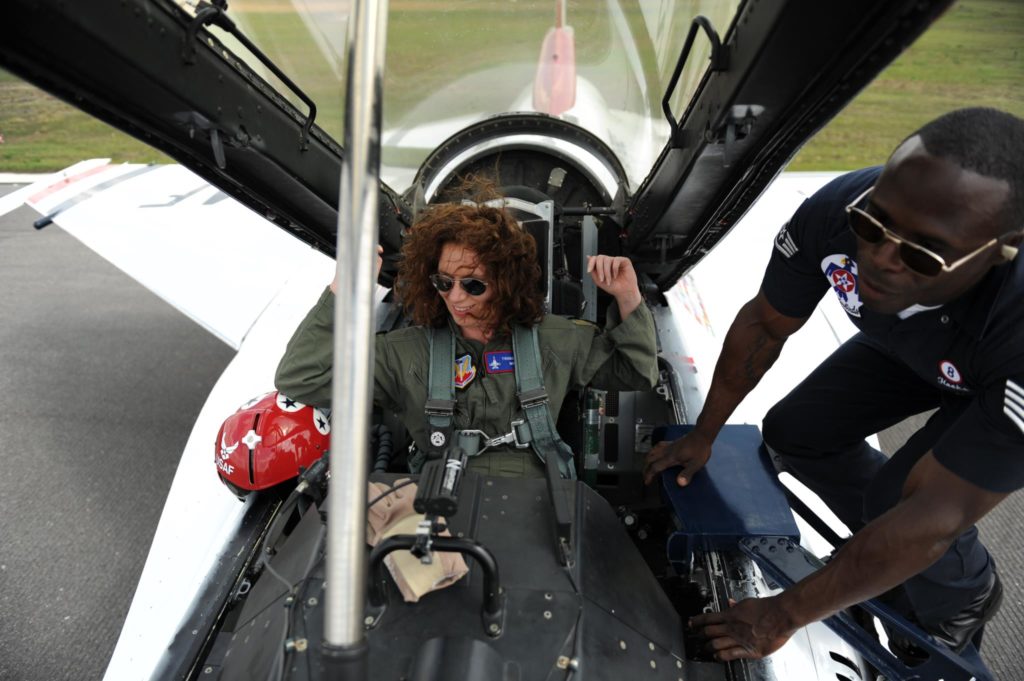Estimated reading time 11 minutes, 9 seconds.
The Aviators is a television and online streaming series soaring into its ninth season. The program is produced and hosted by pilots, with creative influences from aviation enthusiasts across the globe.
Executive producer Anthony Nalli is a private IFR (instrument flight rated) pilot and “driving force” behind the show. Nalli has been producing, writing, budgeting, and voicing the series since its inception in 2010.

It originally aired on the Global Television Network in Canada. After the first season — which Nalli admits was a testing pattern — the production values soared, and so did interest from international broadcasters and streaming services. By the end of season two, the show was broadcast by PBS (Public Broadcasting Service) in the U.S.; in Canada on Travel+Escape; and through online streaming services: Amazon Prime Video, Hulu, Google Play, and Apple iTunes. The show (87 episodes to date) has aired to a viewership of over 50 million in 100 different countries worldwide.
The original concept was created by John Lovelace, who also produced and hosted the documentary television series Wings Over Canada.
“[Lovelace] had an idea for an aviation TV show [that was] a little less Canada-centric and less divided between flying and fishing. I became involved in the production and [took] on the financial burden of the show [to] make it happen — basically just feeding money into it and figuring out a way to make money from it,” Nalli admitted.

The on-air team includes hosts Kurtis Arnold, a commercial IFR pilot and air traffic controller; Sara Rependa, a commercial, multi-engine, float-rated pilot; and most recently Peter Knize, a host on Nalli’s most recent show, “The RVers,” who is also a private pilot. Guest hosts have included Raeleen Ranger, Jeff Lewis, and Joe Ellis — all airline pilots — and even country singer and pilot George Canyon.
During the longevity of the series, each of the hosts embark on bucket-list aviation adventures. From spending the day as a member of the U.S. Air Force Thunderbirds Demonstration Team to stepping into the cockpit of a P-51 Mustang for authentic Second World War training, to riding in the backseat with the AeroShell Aerobatic Team during an airshow performance. The viewer is exposed to some of the most breathtaking and mind-blowing once-in-a-lifetime aviation experiences.
The Aviators’ storyboards are inspired by the aviation community’s endless enthusiasm and curiosity towards the past, present, and future of flight “that truly feels boundless.”
“Luckily for us, we’ve managed to find a group of individuals embedded with these very same characteristics to put in front of our cameras,” said Nalli.

He added: “Many of the segments come from my own personal interest or curiosity, and others are driven by subjects suggested by sponsors.”
The cost per episode is a fraction of what it should be, and “principal costs are directly production-related.” According to the producer, they operate on a “shoestring,” comparing their budget to a Saturday morning fishing show. “We don’t spend insanely, but we tend to overshoot,” he said.
With the cost of gear and “shooting in 4K,” there is no room for error. And because of “the nature of aviation,” often times a re-take simply isn’t an option. “If you miss the shot, you miss the shot. For example, at an airshow, stuff happens once. So, you can’t miss it.”
As far as a favorite episode, without a doubt, Nalli said it’s the first episode of season five (5-01). The “Best of The Aviators” shares some behind-the-scenes humor “with a collection of outtakes” that uncovers experiences that are usually off-limits to the general public. “[It] is a good place [to start] because it shows you highlights and lowlights, and we thought it was a perfect opportunity to take a look back at some of our very favorite moments,” he told Skies.

From a production perspective, highlights include the time they tested out whether a private pilot could take over the controls of an airliner and safely land it — in a simulator environment. The segment became a fan favorite and was soon followed by an episode where cameraman, Devin Lund, was put to the test in the captain’s seat. Following this, they handed the controls of a Boeing 737 simulator over to a 12-year-old boy.
Later, Nalli visited the University of North Dakota’s School of Aerospace and Sciences in Fargo, Grand Forks, to try to fly a helicopter; he compared the “balancing act” experience to “standing on a basketball.”
Another heart-pounding segment demonstrates aviation egress training. Host Rependa is strapped into a simulated cockpit, which is then “fully submerged and overturned in the water” — viewers can exhale when the host effortlessly escapes.

Yet another memorable day on location was during a visit to the Embry-Riddle Aeronautical University’s Oxygen Deprivation Lab, which followed one of the hosts (Arnold) as he experienced a simulated altitude of nearly 30,000 feet to explore the effects of hypoxia.
Over the past eight seasons, the production crew has experienced every angle of the aviation industry, including a myriad of up-close-and-personal aerobatic airshow experiences. Interviews and aerial expeditions with the likes of Sean Tucker, Patty Wagstaff, Julie Clark, Gene Soucy, and wing walker Theresa Stokes led to the creation of Air Boss. The six-episode spin-off follows airshow helmsman Wayne Boggs “as he juggles more aircraft in an hour than most air traffic controllers do in a whole shift.”
In 2012, after the success of season two, The Aviators won a Hugo Television Award. Looking back, Nalli admitted that season one was experimental, even going as far as to say it was “a little cringy.” Viewers will see a striking difference in the production quality of the seasons that followed.
With eight seasons under his belt, and despite the production hiatus caused by the COVID-19 pandemic, the self-professed aviation fanatic and his production team of experienced aviators continue to forge ahead on season nine.
“We’ll see you in the sky.”








